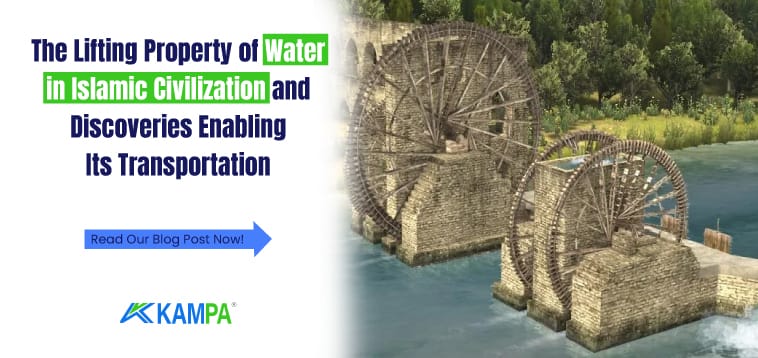The Lifting Property of Water in Islamic Civilization and Discoveries Enabling Its Transportation
Throughout history, Islamic civilization has developed important discoveries and technologies in the field of water management, such as water lifting and distribution.
These discoveries have had a major impact on many fields such as agriculture, drinking water supply, industrial production and urban planning. Let us examine in detail some of the important discoveries that enabled the lifting of water in Islamic civilization:
- Artesian Wells: Artesian wells are wells that bring underground water resources to the surface under pressure. Islamic civilization was a pioneer in the digging and use of such wells in the Arabian Peninsula. Thanks to these wells, water was brought to the surface with natural pressure from underground and used to meet irrigation and drinking water needs.

- Aqueducts (Aqueducts): In Islamic civilization, aqueducts were among the important structures that allowed water to be transported to high areas. Aqueducts are usually built of stone or brick and allow water to be transferred from high to low areas thanks to gravity. These structures were used to irrigate agricultural fields and supply water to cities.

- Sakia (Water Lifting Machine): Sakia is a mechanical device that lifts water to the surface. This device allows water to be drawn up from a well or water source by rotational motion. In Islamic civilization, the sakia was widely used and played an important role in delivering water to agricultural fields.

- Waterwheels: Waterwheels are tools that enable the conversion of fluid water into mechanical energy. In Islamic civilization, water wheels were used in processes such as grain grinding, flour making and weaving by using the energy of water. In this way, production processes were facilitated by using the power of water as well as manpower.

- Waterways and Irrigation Systems: The complex irrigation systems developed in Islamic civilization ensured the regular irrigation of agricultural lands. Irrigation canals, waterways and planned infrastructures for the efficient distribution of water contributed to the development of efficient agriculture and plant cultivation.
- Water Management and Urban Planning: Urban planning and water management were crucial for the efficient use of water in Islamic civilization. In regions such as Andalusia (Iberian Peninsula), complex water canals, fountains and reservoirs were built to regulate and distribute the flow of water. These infrastructures were used to meet the water needs of cities and prevent water waste.

These discoveries and technologies reflect the significant contributions of Islamic civilization to water management and use. The methods of lifting and distributing water developed during this period not only made life easier at the time, but also served as a source of inspiration for sustainable resource management today.

